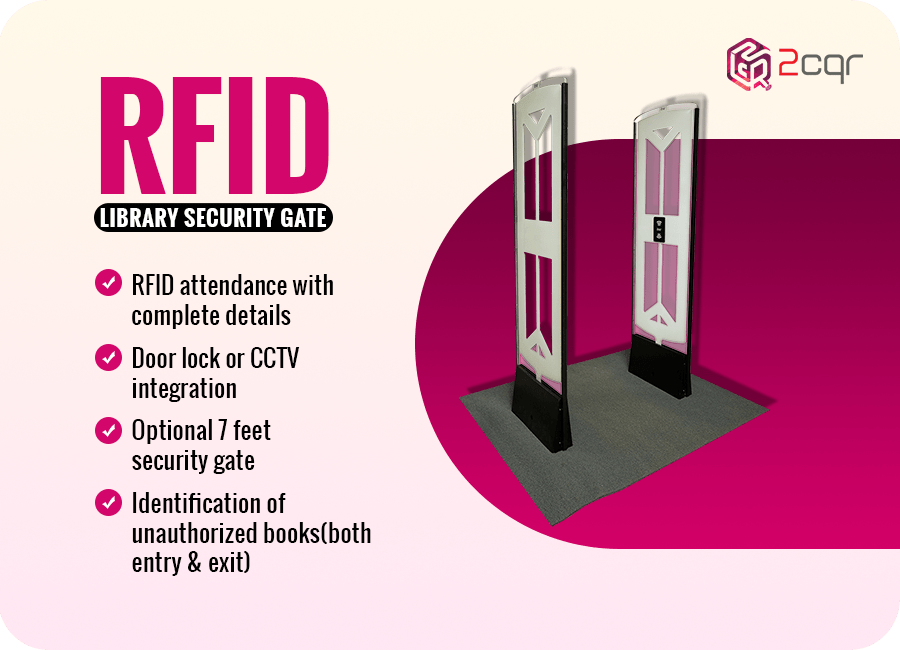
In the world of library management, RFID technology has emerged as a game-changer, pushing traditional libraries into a new era of efficiency and innovation.However, the decision to adopt RFID technology is often accompanied by challenges, primarily driven by concerns related to security issues and the associated implementation costs. Among the key contributors to the expenses in implementing an RFID library system, the cost of RFID tags takes centre stage.
Libraries worldwide find themselves at the crossroads, seeking to utilise the transformative potential of RFID technology while carefully evaluating the financial implications. Delving into the intricacies of RFID tags and their costs becomes imperative for libraries contemplating this progressive leap.
Here, we are revealing the four crucial factors that decisively influence the cost of RFID tags per unit, shedding light on the considerations that shape this pivotal aspect of modern library systems.
RFID System
In the realm of library RFID systems, the choice between passive and active RFID tags significantly influences the overall cost considerations before implementation. Most RFID solutions adopted by libraries rely on passive RFID systems, where the tags lack an internal power source, relying on radio frequency signals for communication.
The cost parameters shift when libraries opt for an active RFID system, as the active tags, equipped with their power source, are inherently more expensive than their passive counterparts. This important distinction in RFID tag types becomes a pivotal factor that libraries must carefully evaluate, navigating the delicate balance between cost-effectiveness and system requirements to make informed decisions before embarking on the implementation journey.
Material of the Tags
In the intricate landscape of implementing RFID systems in libraries, the choice of RFID tags is a crucial determinant in assessing the overall cost considerations. The varied nature of library collections, comprising diverse materials like books, DVDs, and CDs, necessitates a thoughtful approach in selecting RFID tags tailored to specific resource types.
The cost evaluation comes into play as libraries must determine whether book-specific tags or those designed for materials like metal are more suitable for their unique collections. Additionally, the volume of RFID tags required becomes a pivotal factor influencing the overall cost, as bulk purchases often come with varying pricing structures.
This meticulous consideration of RFID tag compatibility with different resource materials and the corresponding volume requirements forms a fundamental aspect of the cost evaluation process, enabling libraries to make informed decisions that align with their collection diversity and financial constraints.
Durability of the Tags
Undoubtedly, the longevity and durability of RFID tags stand as crucial factors influencing the cost considerations for libraries. Opting for high-quality tags crafted from durable materials ensures an extended operational lifespan.
These robust tags are designed to withstand the rigors of library environments, significantly reducing wear and tear on the embedded chips. While the upfront cost of these durable RFID tags might be slightly higher, their long-term benefits shine through in terms of limited maintenance requirements and fewer replacements.
In essence, investing in quality and durability not only safeguards against frequent replacements but also translates into cost-effectiveness over the extended duration of RFID system implementation in libraries.
Security, Memory, Writing Cycles
The cost evaluation of RFID tags for libraries is intricately tied to the security standards implemented by tag manufacturers. Advanced authentication measures and heightened security features directly impact the overall price of RFID tags, offering protection against unauthorised access, tag cloning, and information theft.
Notably, passive RFID tags, commonly used in library systems, present a challenge due to their limited storage capacity, typically around 1KB, and a finite number of writing cycles. This limitation becomes a crucial factor, particularly for libraries with high-frequency check-out and check-in processes.
Extending memory and increasing writing cycles to meet such demands incurs additional costs, emphasizing the importance of considering both security and technical specifications when evaluating the cost-effectiveness of RFID tags for library implementation.
Conclusion:
As libraries embark on the transformative journey into RFID technology, the decision-making process is shaped by considerations, with the cost of RFID tags playing a central role. The choice between passive and active systems, careful selection based on material types, emphasis on durability, and the influence of security standards and memory specifications all contribute to the overall cost evaluation. Striking the right balance between upfront investment and long-term benefits is paramount. With a comprehensive understanding of these factors, libraries can confidently step into the realm of RFID, ushering in a new era of efficiency and innovation in library management.



Valuable insights for making informed decisions. Thanks for sharing these key considerations—we’re excited to learn how to effectively manage costs and improve library operations with RFID technology!